Best Fruit Salsa Recipe (A Sweet-Savory Condiment)
Looking for something different to dress up your meat, chicken, veggies or fish? Try this delicious fruit salsa recipe – it’s savory with a hint of sweetness, and as mild or spicy as you like.
Use this easy recipe as a guideline and switch up the fruit to match what you are serving. For example, peach salsa is fantastic on salmon and grape salsa is fabulous on roasted cauliflower.
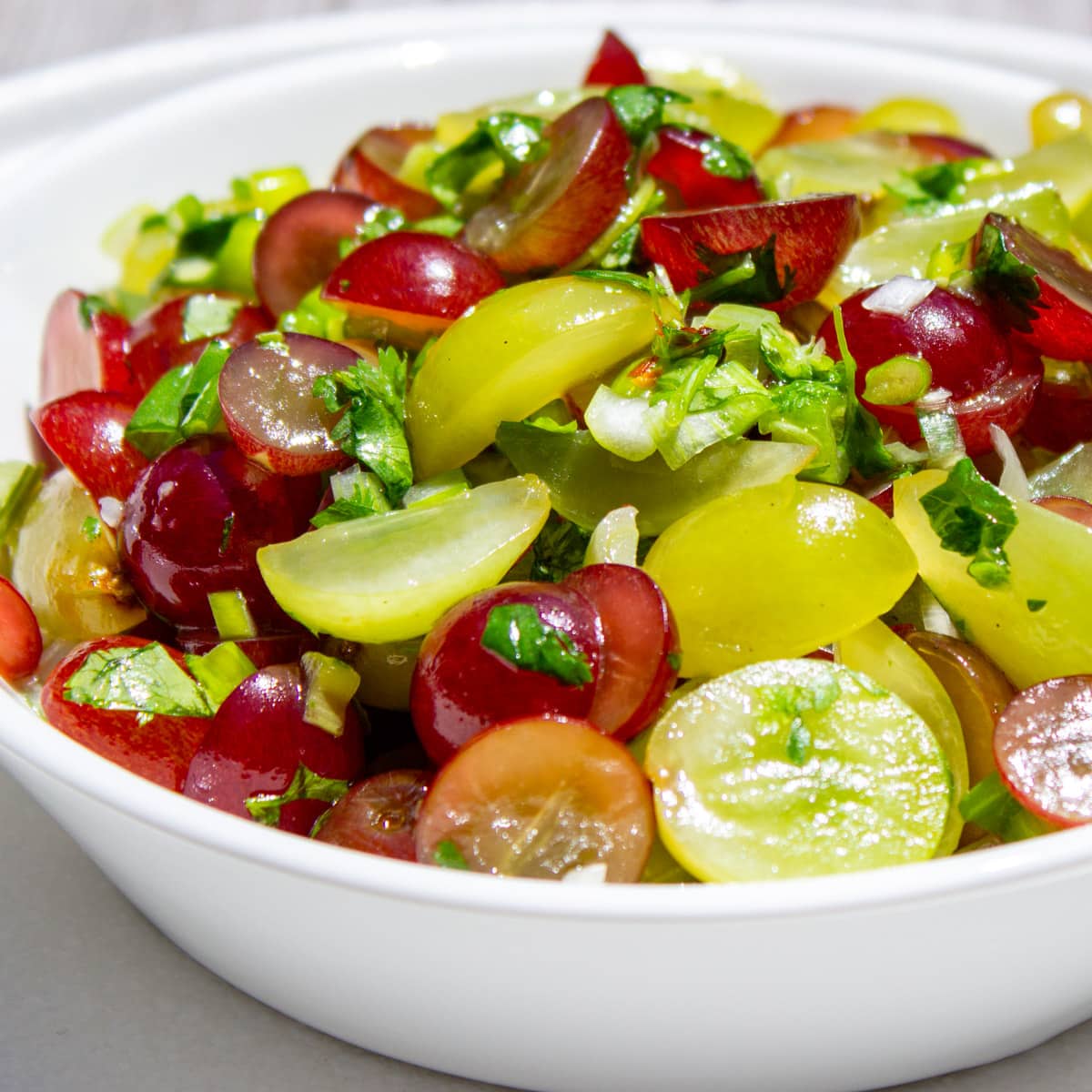
I love this simple fruit salsa recipe because it’s flexible, quick, easy, adaptable to your taste and, most importantly, flavorful and fresh. It’s a nice change from Pico de Gallo or other tomato-based salsas and other sauces or gravies.
It’s an easy and refreshing side dish or topping for holiday gatherings, summer parties or as a snack with savory chips or crackers.
What to expect
This fruity salsa is a condiment. A lot of fruit salsa recipes you will find online are sweet fruit salsas used as a fruit dip served with cinnamon pita chips or cinnamon crisps. Nothing wrong with that. This recipe, however, is intended as a savory topping or side for a main dish.
There is no cooking involved with this fresh fruit salsa. We are using just a few common ingredients available at any grocery store.
The natural sweetness comes from the fruit and a touch of optional honey if you choose to add it. I do. The savory part comes from green onions, herbs, lime juice, ginger and chili flakes (if you like spicy).
The recipe is adaptable to your tastes and menu – choose your fruit, make it chunky or fine, and add spice or not.
The prep is easy and takes about 10-15 minutes. Chop the fruit into small pieces, combine with the rest of the ingredients, and rest. Done!
Ingredients – tailored to your taste
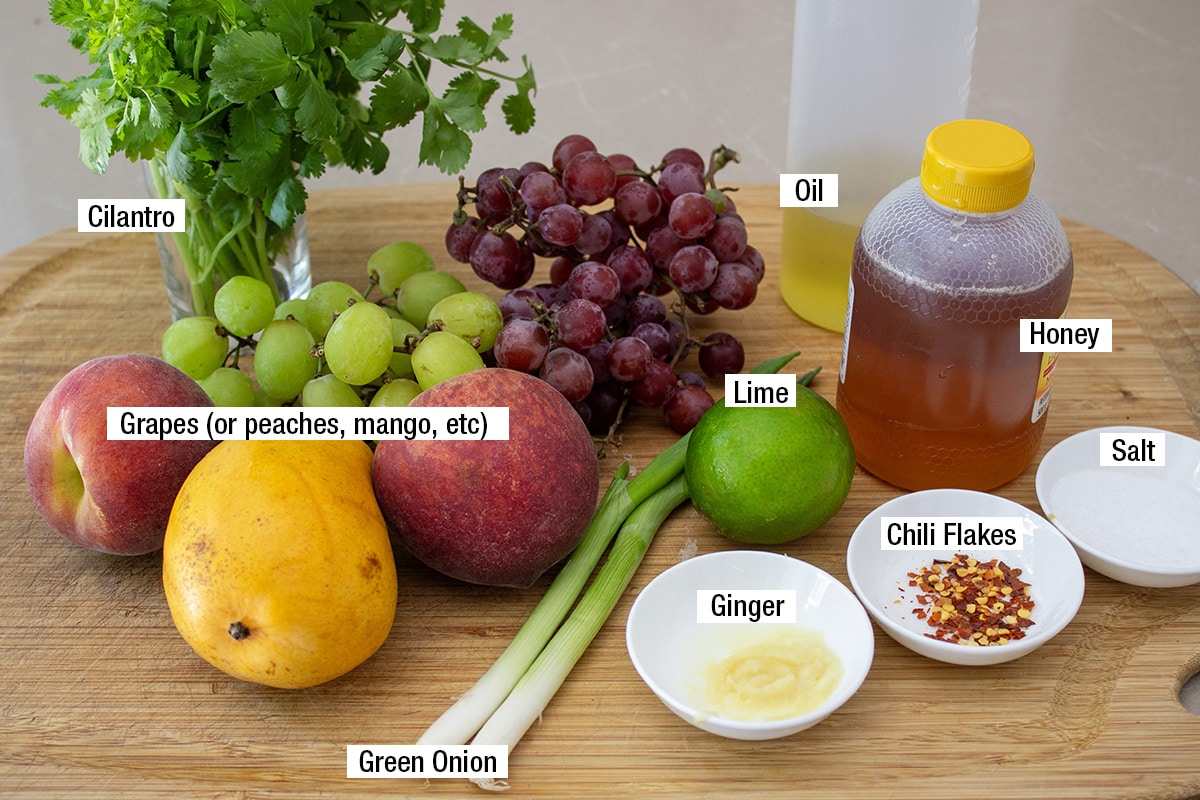
Fruit: My favorite fruits for this fresh fruit salsa are fresh peaches (in season), mango, grapes and fresh pineapple. Watermelon, nectarines, plums and cantaloupe are good options too. Feel free to use a combination. You can also use frozen fruit, thawed and diced, but the texture will be limper.
Seasonings/dressing: The chopped fresh fruit is mixed with a dressing of green onion, cilantro, olive oil, and lime. I like to add a touch of honey, a bit of ginger, and some red pepper flakes.
Variations and substitutes:
- Vary the level of heat with chili flakes, chopped jalapeno peppers or hot sauce such as sriracha.
- Add a little bit of crunch with a diced granny smith apple.
- Add a splash of orange juice, lemon juice or apple cider vinegar instead of lime. You can also add lemon or lime zest.
- Substitute the green onions with chives or thinly diced red onion.
- If you don’t like cilantro, try parsley.
- Finely dice the fruit or make it chunkier.
- Add diced avocado.
- For a more summery fruit salsa, add sliced fresh strawberries in season.
How to make fruit salsa
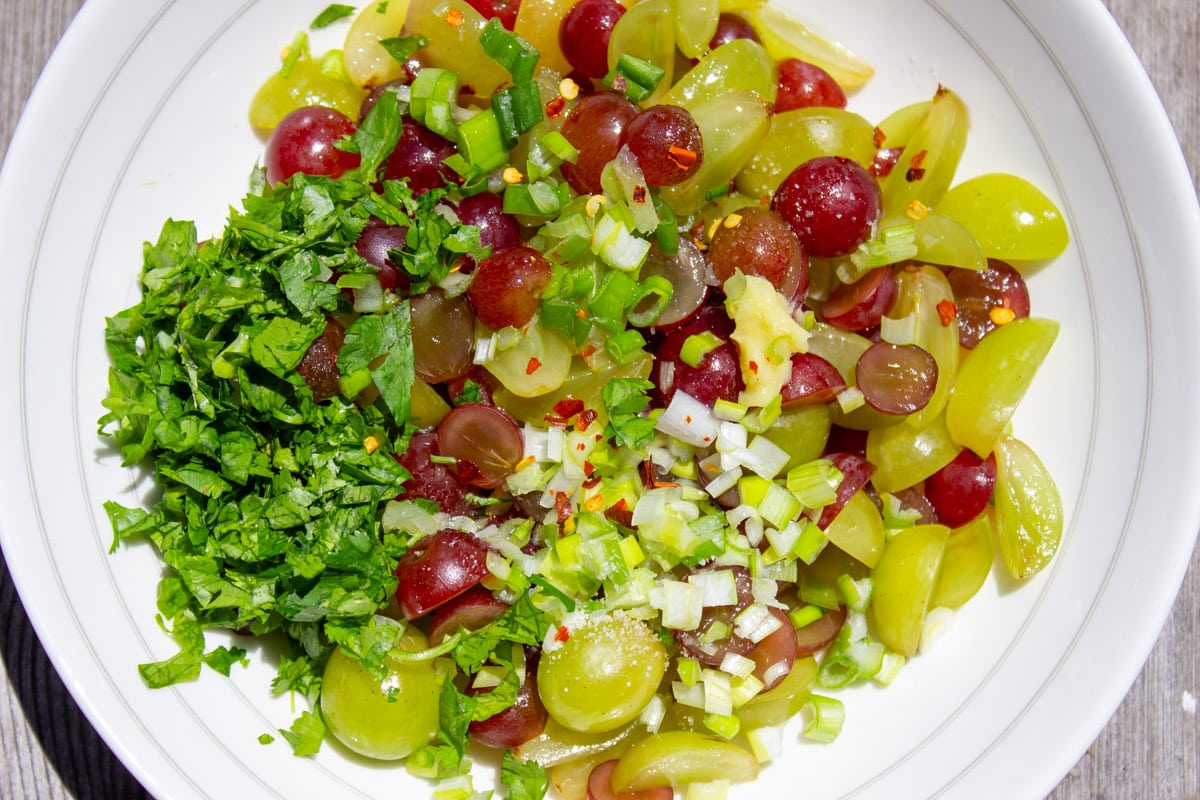
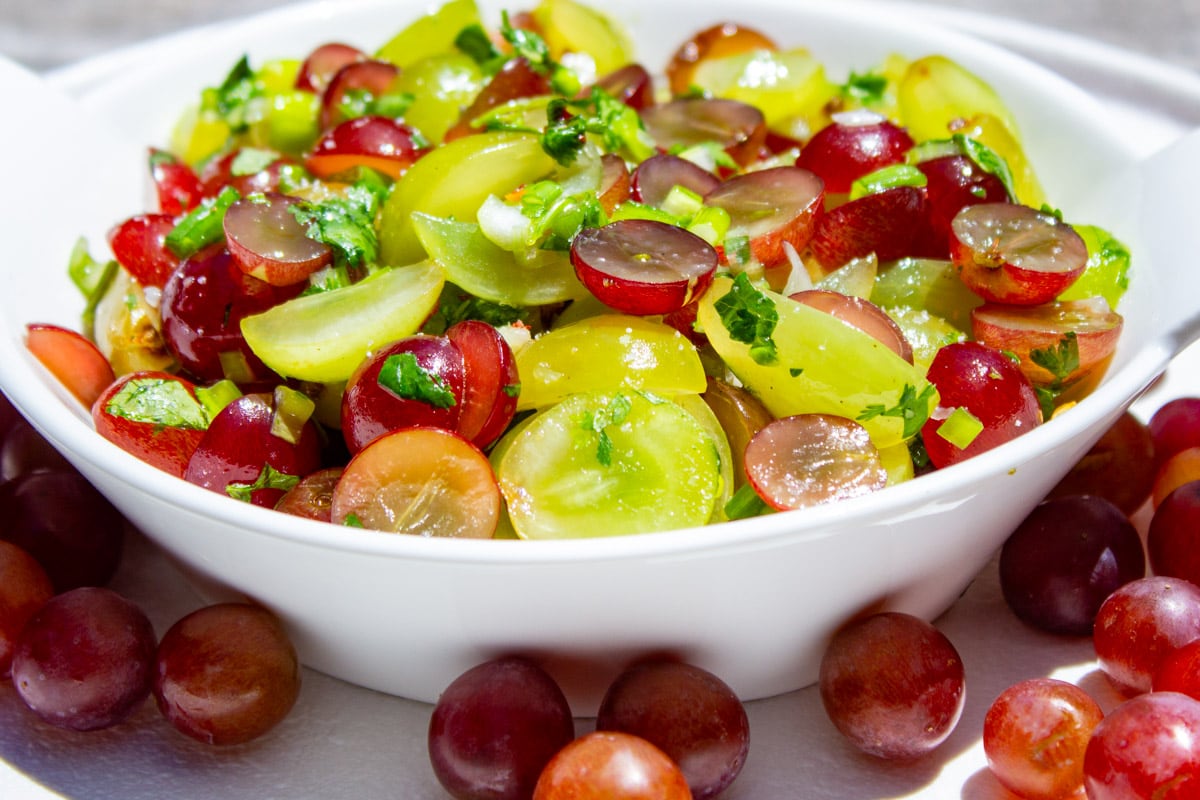
Make Ahead
For best results let the fruit salsa sit for 30 minutes to an hour at room temperature to give the fresh ingredients time to meld.
You can make a batch of fruit salsa up to 2-3 days in advance. Just store it in an airtight container in the fridge until ready to serve. Keep in mind that some fruits will get a bit watery when sitting in the fridge.
What to serve with fruit salsa
Here are some suggestions for how to use this versatile homemade salsa.
- Many fruit salsas are a wonderful complement to fish, pork, beef, chicken, and grilled or roasted vegetables.
- They also make a great addition to fish tacos or quesadillas and wraps.
- Or try pairing it with creamy goat cheese or baked brie for an appetizer.
Check out these recipes that incorporate fruit salsa.
Recipe FAQs
Salsa is the Spanish word for sauce.
Salsas are typically uncooked vegetables and/or fruit combined with herbs, onions and spices. Mexican salsas (tomato-based) are the most common. Relishes are also uncooked and often have a pickled component. Chutneys, on the other hand, are cooked and usually contain warm spices like cinnamon and cloves and some heat. Chutney is the Hindi word for sauce.
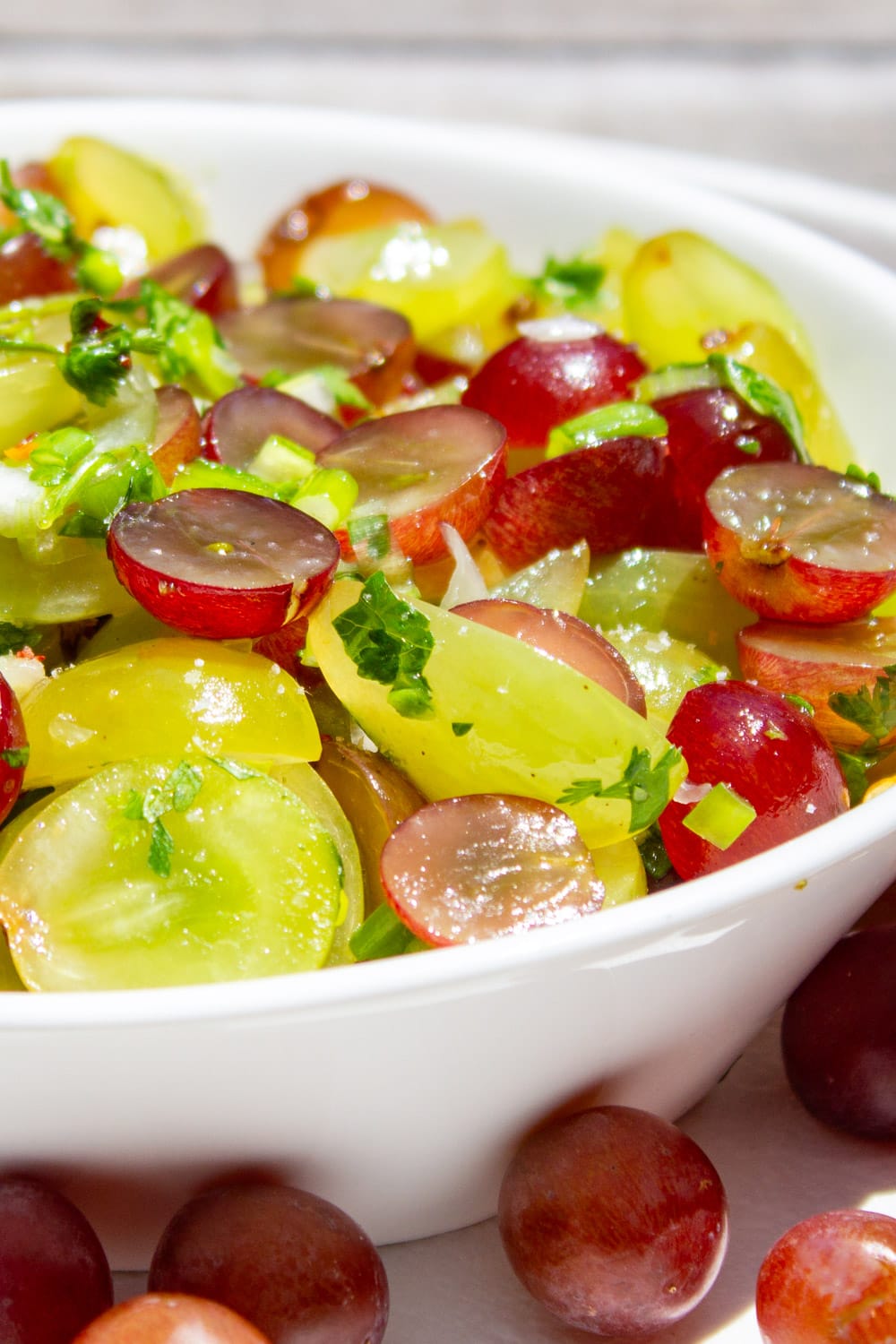
More condiments
And check out our peach chutney, apple chutney or pear chutney. Delish!
If you like this recipe, please leave a 5 star rating 🌟🌟🌟🌟🌟in the recipe card below. And if you REALLY like it, consider a review in the comments. Thanks very much!
Best Fruit Salsa (A Sweet-Savory Condiment)
Ingredients
- 2 cups grapes, green and red, cut in half (or quarters if large), Note 1
- 2 teaspoon honey (or less if fruit is very sweet)
- 2 tablespoon finely chopped green onions
- 1 tablespoon neutral olive oil
- 1 tablespoon lime juice (or lemon juice)
- 2 tablespoon chopped fresh cilantro (use parsley if you prefer)
- 1/2 teaspoon kosher salt
- 1/4 teaspoon fresh ginger optional
- red pepper flakes, 1/8-1/4 tsp optional
Instructions
- MAKE SALSA: Mix together all the ingredients in a bowl. Taste and adjust to your liking. Cover and let sit at room temperature or refrigerate for 30-60 minutes to let flavors blend. Serve as a condiment for chicken, meat, vegetables or fish. Or as a topping for fish tacos or wraps.Makes about 2 cups/570 grams.
Recipe Notes
- Substitute other fruits like mango, peaches, melon, pineapple, plums, nectarines. Chop fruit finely or more chunky – up to you.
- Variations:
- Vary the level of heat with chili flakes, chopped jalapeno peppers or hot sauce such as sriracha.
- Add a splash of orange juice, lemon juice or apple cider vinegar instead of lime. You can also add lemon or lime zest.
- Substitute the green onions with chives or thinly diced red onion.
- Add diced avocado.
- Ways to use fruit salsa:
- As a topping or side dish for fish, pork, beef, chicken, and grilled or roasted vegetables.
- In fish tacos or quesadillas and wraps.
- With creamy goat cheese or baked brie for an appetizer.
- Make Ahead: The fruit salsa can be made 2-3 days ahead (but note that some fruits get a bit watery after a day). Store leftover salsa in an airtight container.

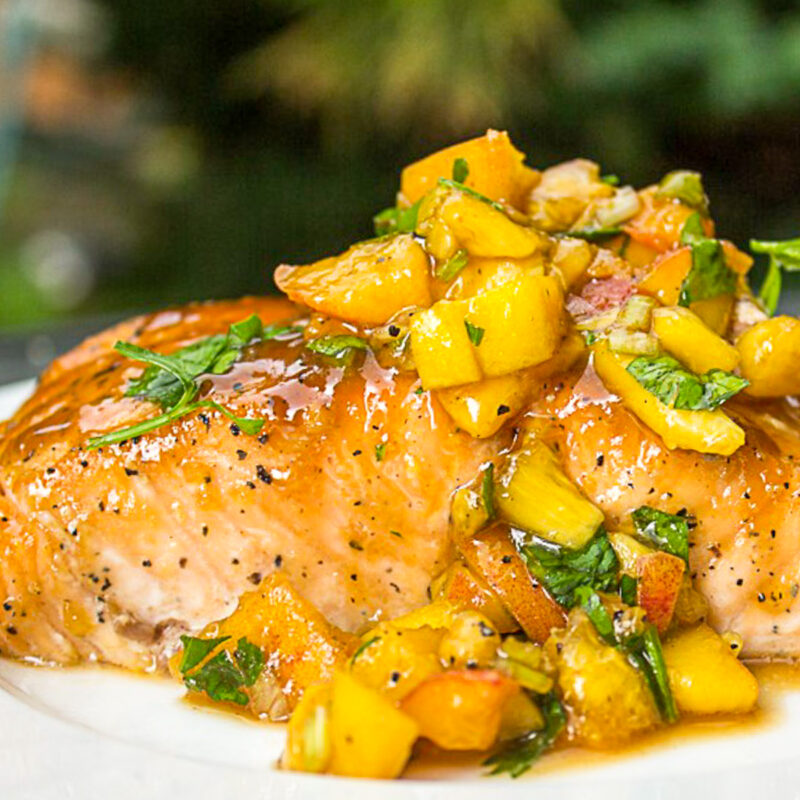
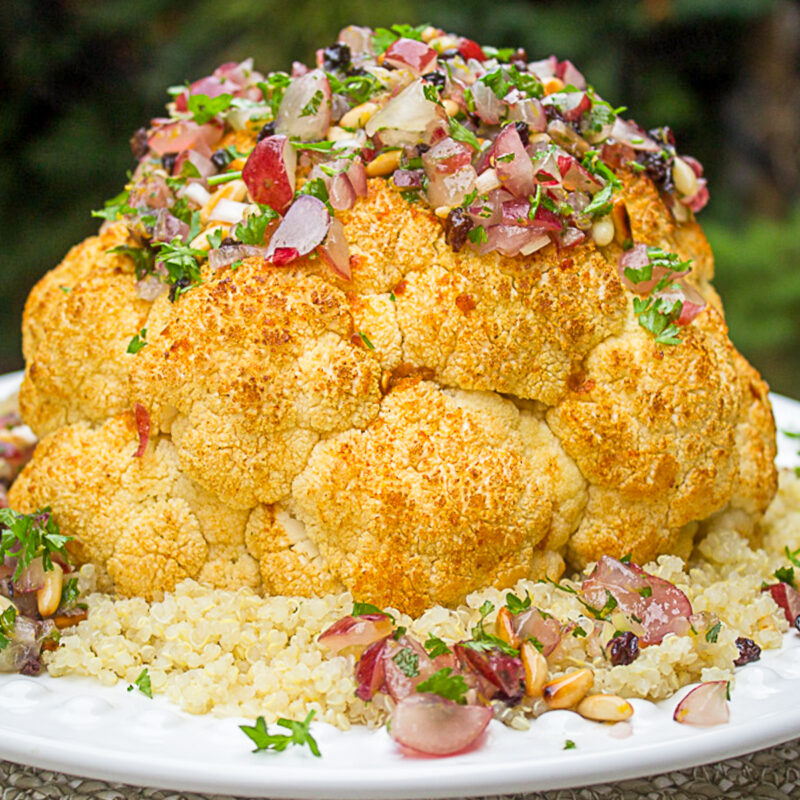
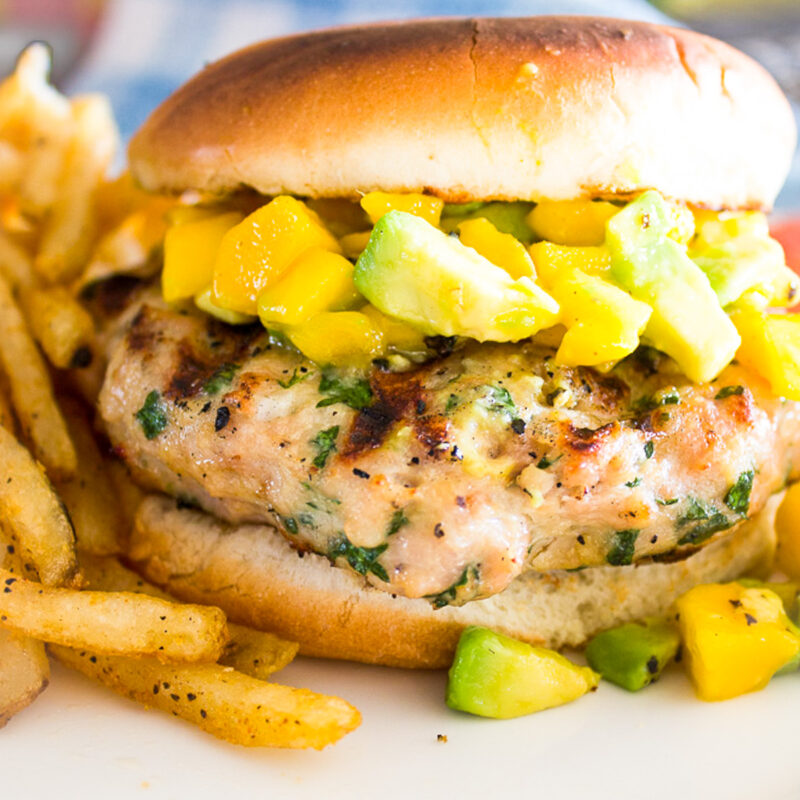
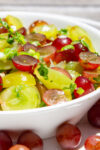
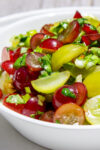
Delicious and great with almost anything!
Glad you liked it Kathy!